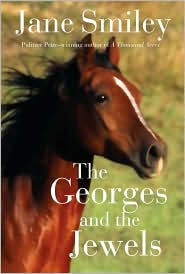Charles R. Macedo is a partner at Amster, Rothstein & Ebenstein LLP, and the author of
The Corporate Insider’s Guide to US Patent Practice, which provides a basic understanding of patent practice in the United States as it relates to both obtaining and enforcing patents. Macedo’s practice specializes in all facets of intellectual property law including patents, trademarks and copyrights. In the article below he looks at “patent worthiness.” Read his other OUPblog posts here.
Speed Dating is not the only issue that our nine Justices of the Supreme Court raised on November 9, 2009 to determine what types of processes should be entitled to “patent worthiness.” Justice Scalia wanted to know why, if the patent laws were intended to cover broad processes, weren’t there any patents filed in the 1800s relating to training horses.
At the time, as Justice Scalia rightly observed, the American economy was completely dependent on horses. In fact, during the late 19th Century commerce came to a standstill when approximately 99% of all horses in America contracted equine influenza. According to Greg Sabin’s February 13, 2009 article, “Nightmare on Wall Street: 4 Other Times Our Economy Tanked“, at the height of the pandemic “as many as 20,000 businesses failed, a third of all railroads went bankrupt, and unemployment spiked to almost 15 percent.”
Not surprisingly, as Justice Scalia suggested, there were many U.S. Patents issued in the late 1800s that taught different methods of training or breaking horses:
* U.S. Patent No. 247,296, to G.W. Blake, entitled “Harness” (patented September 20, 1881);
* U.S. Patent No. 381,745, to H. C. Woodnutt, entitled “Device for Assisting in Training Horses” (patented April 24, 1888);
* U.S. Patent No. 453,727, to H. Sample, entitled “Apparatus for Treating or Taming Horses” (patented June 9, 1891);
* U.S. Patent No. 478,513, to C.C. Kelly, entitled “Apparatus for Training Animals” (patented July 5, 1892); and
* U.S. Patent No. 545,228, to J.W. Green, entitled “Horse-Breaking Apparatus” (patented August 27, 1895).
While admittedly none of these patents claimed a method of training or breaking a horse, they all obtained patent protection for such methods by claiming the apparatus to do it.
There are various explanations of why these patents claimed apparatus instead of methods:
* In the 1800s, most patents were drafted in the form of apparatus or system claims, and not method claims, although the law allowed for method claims in the form of “arts.”
* It was much easier to detect infringement of an apparatus that was sold than to detect a method of performing acts. Thus, not surprisingly, one would be less likely to invest in method claims.
* Perhaps more importantly, the law was in flux as to what type of method claims were available. For example it was not until 1909, in Expanded Metal Co. v. Bradford, 214 U.S. 366 (1909), that the Supreme Court made clear that patent eligible method claims did not merely need to have chemical transformations, but could also include mechanical transformations.
Indeed, when the 1952 Patent Act was adopted, the law was drafted to define patent-eligible methods broadly. See 35 U.S.C. § 100(b). Thus, perhaps Justice Scalia would find it interesting to note that since the Act was enacted, many patents have issued which claim methods of training animals (including horses):
* U.S. Patent No. 3,099,248, to J.K. Giles et al., entitled “Methods of Training Horses” (patented July 30, 1963) (claiming “a method of breaking and training horses preparatory to racing”);
* U.S. Patent No. 5,566,645, to T.H. Cole, entitled “Animal Training Method and Apparatus” (patented October 22, 1996) (claiming “[a] method for training animals”);
* U.S. Patent No. 6,311,645, to J.S. Brown, entitled “Animal Training Method and Apparatus” (patented November 6, 2001) (claiming “[a] method of training an animal”);
* U.S. Patent No. 6,352,053, to D. Records et al., entitled “Apparatus and Method for Animal Testing and Training” (patented March 5, 2002) (claiming “[a] method permitting an observer to determine the bucking propensity of an animal such as a bull or horse”);
* U.S. Patent No. 6,568,940, to M. Mack, entitled “Equestrian Training Method” (patented May 27, 2003) (claiming “[a] method for equestrian training”);
* U.S. Patent No. 6,602,209, to D.H. Lambert et al., entitled “Method and Device for Analyzing Athletic Potential in Horses” (patented August 5, 2003) (claiming “[a] method for predicting potential performance in a selected racing or training animal”);
* U.S. Patent No. 7,107,939, to L.J. Lady, entitled “Animal Training Apparatus and Method” (patented September 19, 1996) (claiming “[a] method for training a four-legged animal”); and
* U.S. Patent No. 7,331,310, to K. Sersland et al., entitled “Domestic Animal Training Method” (patented Feb 19, 2008) (claiming “[a]n animal training method”).
Turning back the patent law to the uncertainty of the 1800s, when our economy was based on agrarian and early industrial technology, is not what our nation needs in this time of economic crisis.
The point is that any subject should be available for patent protection, whether it is Speed Dating, Horse Training, or Hedging Risk, so long it does not claim the subject in an abstract manner.




